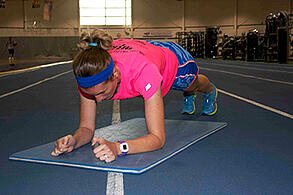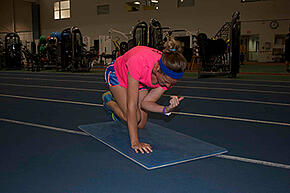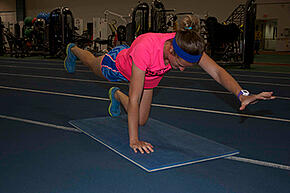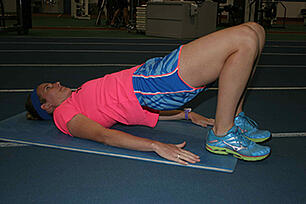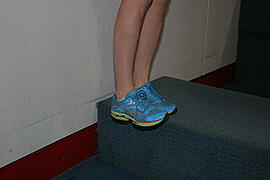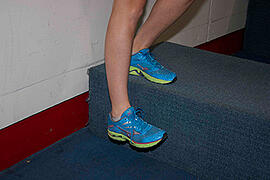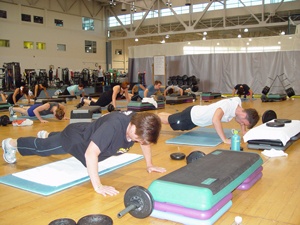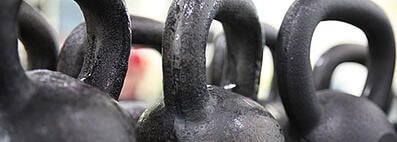When we are new to exercise or trying an exercise that is new to our body, it’s pretty common to feel SOME sort of muscular pain.
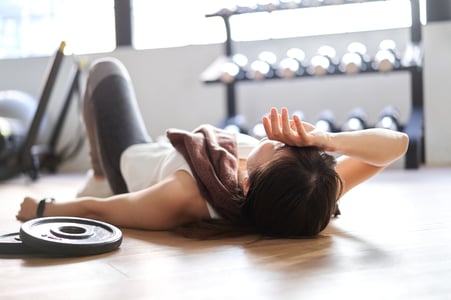 I think most of us can agree that a little muscle soreness after a fantastic workout is a fun way to remember that things are changing and that we are getting stronger. I think we can also agree (and most have experienced it) that there is a certain degree of soreness that kind of feels like “everything hurts so badly you can’t stand up or lift your arms,” which isn’t quite as motivating. Along with this you may feel irritable, fatigued, and really hungry. Sounds fun, right?
I think most of us can agree that a little muscle soreness after a fantastic workout is a fun way to remember that things are changing and that we are getting stronger. I think we can also agree (and most have experienced it) that there is a certain degree of soreness that kind of feels like “everything hurts so badly you can’t stand up or lift your arms,” which isn’t quite as motivating. Along with this you may feel irritable, fatigued, and really hungry. Sounds fun, right?
Not to worry! For each type of muscular soreness there is an amazing recovery solution.
Why Do My Muscles Get Sore in the First Place?
The muscle soreness that you feel 24 to 48 hours after the workout is called Delayed Onset Muscle Soreness (DOMS), and it is actually caused by tiny micro-tears in the muscle and surrounding tissue. Say WHAT? Tears in the muscle? Sounds pretty terrible, right? But actually those little tears in the muscle are necessary to make things stronger.
So What Should I Do About Muscle Soreness?
To alleviate mild muscle soreness, a little movement is actually best! Try walking or some yoga. While it’s good to move after a workout to take away some of that pain, this is a pretty fine line and it’s most important to truly listen to and trust your body and give it rest when needed.
Here are five ways to take care of your muscles and reduce muscle soreness:
- Take it slow. Gradually progress the intensity, frequency, and duration of your workouts.
- Foam roll. Not sure what this is? It’s a way of stretching and basically giving your muscles and fascia a great massage. Check out our handy guide on how to foam roll!
- Get a massage. You’re going to love this one! Foam rolling is great, but if you have the time and funding for a therapeutic massage, it’s well worth the investment. It helps your body heal itself.
- Practice yoga or do some light stretching. Avoid a fast-paced or intense practice and choose something slower such as Yin or Hatha yoga.
- Ice the muscles. Placing an icepack on a specific area may help reduce muscle soreness in a very localized area. Make sure not to leave the icepack on for very long, though, as it may cause tissue death.
It all comes down to listening to your body and not being afraid to take a day or two to let your body heal. Soreness, injury, and illness are a time to nurture yourself and give your body the rest it needs. Take the rest, and pay attention to how much stronger you feel in your next workout!
This blog was written by Tara Deal Rochford, Registered Dietitian, contributing writer, and author of healthy living blog Treble in the Kitchen. Meet our other NIFS bloggers.


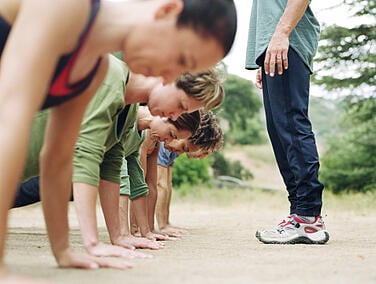 There is a fitness trend that has been bothering me for a long time, and in recent years it has gotten exponentially worse. There are exercise programs that have actually declared war on the human body, and by doing so, have widened the gap further between health and fitness.
There is a fitness trend that has been bothering me for a long time, and in recent years it has gotten exponentially worse. There are exercise programs that have actually declared war on the human body, and by doing so, have widened the gap further between health and fitness.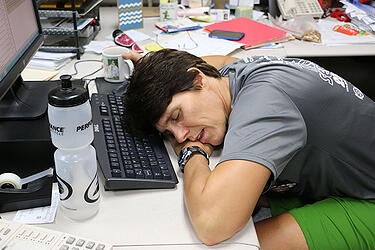 Are you having one of those days (or weeks, or months) where you feel like the gerbil on the wheel? You are going along just fine, and then a stressful situation crops up and you to need to spin the wheel faster. Soon, that’s not fast enough. When you finally realize you are going to be thrown off the wheel if you stop, it hits you: you’re exhausted. I get this way every few months.
Are you having one of those days (or weeks, or months) where you feel like the gerbil on the wheel? You are going along just fine, and then a stressful situation crops up and you to need to spin the wheel faster. Soon, that’s not fast enough. When you finally realize you are going to be thrown off the wheel if you stop, it hits you: you’re exhausted. I get this way every few months. Three blind men, who had been blind for life and who had never experienced an elephant, were brought into an area where an elephant was standing. They were placed within arm’s reach of the animal and were allowed to explore the elephant by just touching what was within their reach. They were not allowed to step closer or move side to side.
Three blind men, who had been blind for life and who had never experienced an elephant, were brought into an area where an elephant was standing. They were placed within arm’s reach of the animal and were allowed to explore the elephant by just touching what was within their reach. They were not allowed to step closer or move side to side.
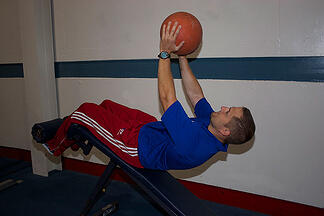
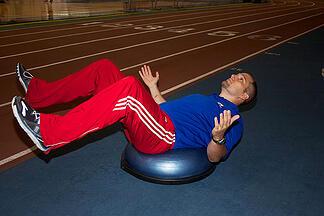
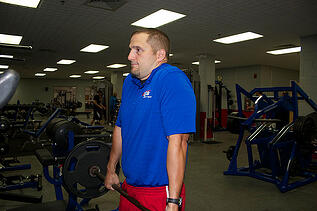
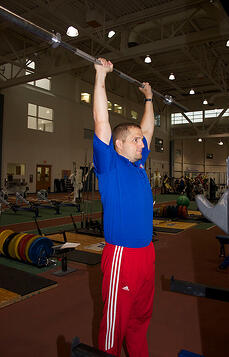

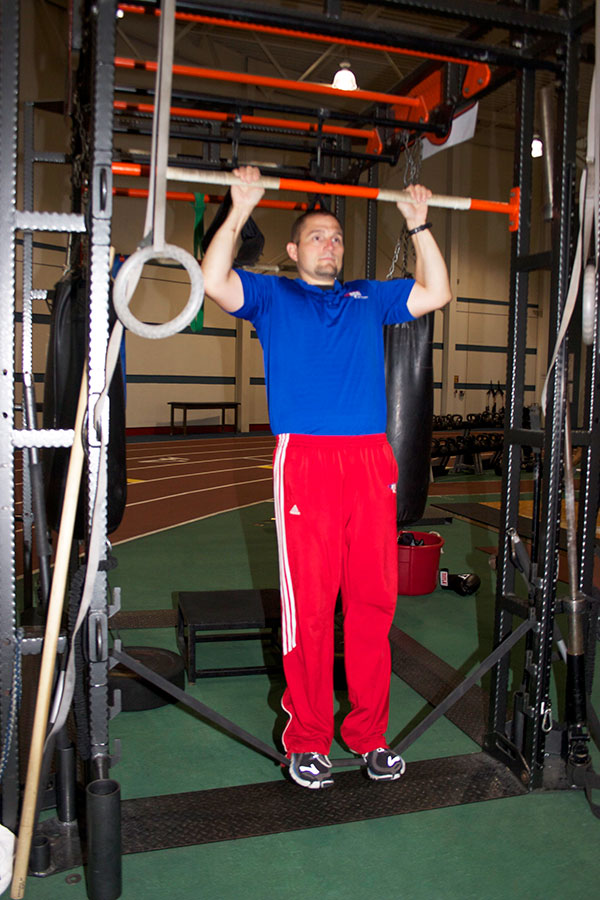
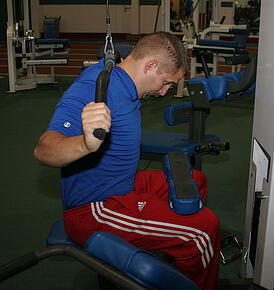
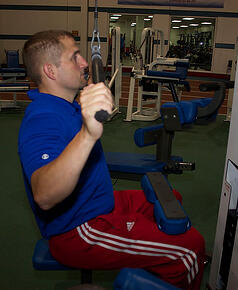
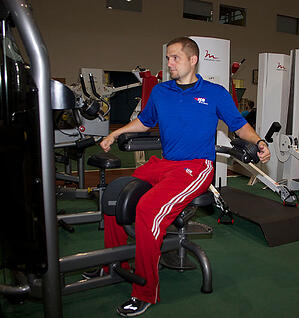
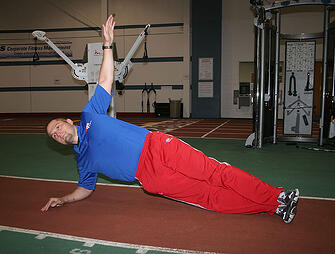
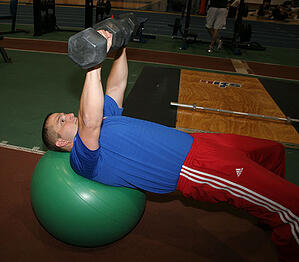
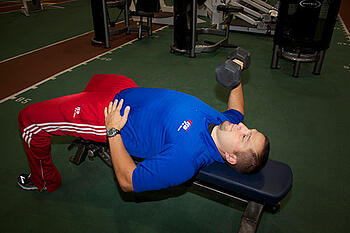
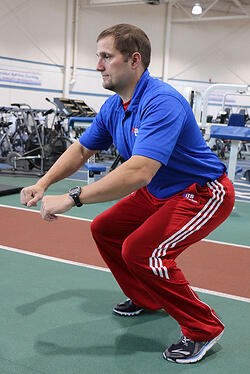
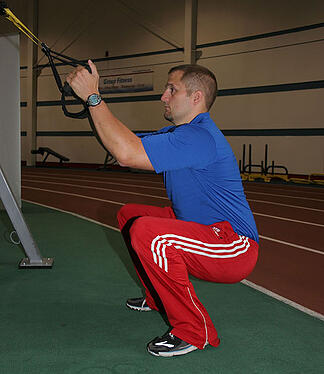
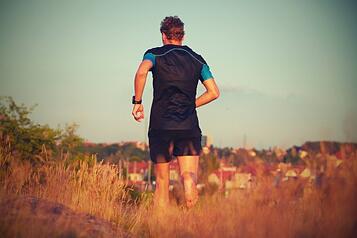 Over the past decade, there has been an increase in the popularity of barefoot training or training in a minimalist shoe such as a
Over the past decade, there has been an increase in the popularity of barefoot training or training in a minimalist shoe such as a 
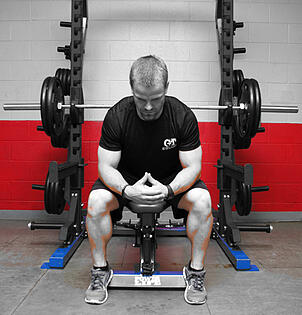
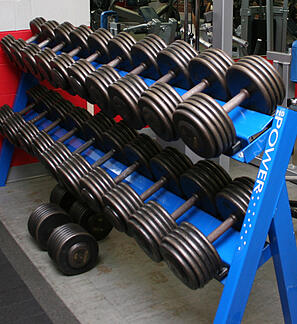
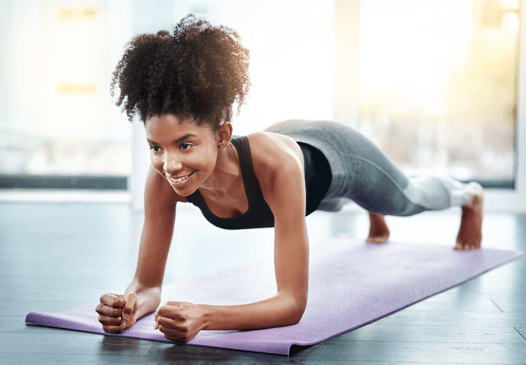 Runners are generally good at doing the same thing over and over again, day in and day out: RUNNING! Oftentimes they will neglect doing some of the components of what runners refer to as “the little things” that pay huge dividends in overall performance and how you feel while running. The little things include sleeping enough, eating right, staying hydrated, maintaining flexibility, and core strength, and the list goes on. When there is limited time in the day to get in a quality run, the thought of cutting a run one or two miles short to do core and flexibility work is often quickly neglected.
Runners are generally good at doing the same thing over and over again, day in and day out: RUNNING! Oftentimes they will neglect doing some of the components of what runners refer to as “the little things” that pay huge dividends in overall performance and how you feel while running. The little things include sleeping enough, eating right, staying hydrated, maintaining flexibility, and core strength, and the list goes on. When there is limited time in the day to get in a quality run, the thought of cutting a run one or two miles short to do core and flexibility work is often quickly neglected.
